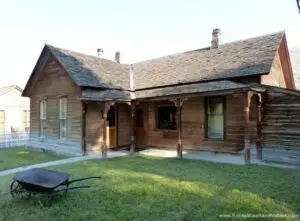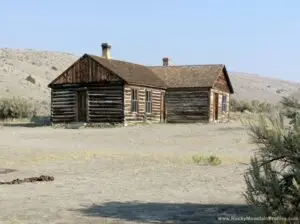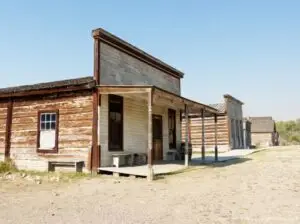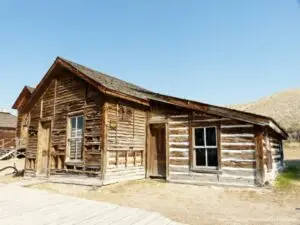Photos by Joan and Mike Sinnwell September 2012
WOW – Impressive is all I can say. With over 60 buildings to wander through you got to love this one.
Bannack was founded in 1862, and named after the local Bannock Indians when John White discovered placer gold on Grasshopper Creek. Grasshopper creek was so named due to the abundance of grasshoppers. As news of the gold strike spread many prospectors and businessmen rushed to Bannack hoping to strike it rich. In 1864, Bannack was named as the first Territorial Capital of Montana. Remaining in Bannack for only a short time, the Capital moved on to Virginia City. In 1863 gold had been discovered near Virginia City and at that time many prospectors left Bannack in hopes of finding the mother lode in Virginia City. However, some people stayed in Bannack and explored the use of further mining techniques. From the late 1860’s to the 1930’s, Bannack continued as a mining town with a fluctuating population. By the 1950’s gold workings had dwindled and most folks had moved on. At that point the State of Montana declared Bannack a State Park.
At its peak, Bannack had a population of about ten thousand. Extremely remote, it was connected to the rest of the world only by the Montana Trail. There were three hotels, three bakeries, three blacksmith shops, two stables, two meat markets, a grocery store, a restaurant, a brewery, a billiard hall, and four saloons. Though all of the businesses were built of logs, some had decorative false fronts.
The citizens of Bannack elected Henry Plummer as Sheriff and he erected a gallows shortly after he started on the job. Later he was accused by some of secretly leading a ruthless band of road agents and murderers. Skinner’s Saloon, still standing in Bannack today, was their suspected headquarters. The owner, Cyrus Skinner, was later accused and hanged as a road agent. Legends say he buried a fortune in gold before he was caught.
Plummer and two compatriots, without trial, were hanged on the gallows he built at Bannack on January 10, 1863. Other Plummer’s associates were lynched and others banished on pain of death if they ever returned. This was the work of the Vigilance Committee. (Read Vigilantes)
The gold miners of Bannack had found millions of dollars in gold, but getting to the gold got harder. Most of the gold miners moved out of Bannack to work new gold fields, and the territorial government moved to a new capital in Virginia City.
By 1870, gold couldn’t be found with a pan, pick, or shovel, and there were fewer than 300 people in Bannack. New techniques in gold mining brought mining companies to the area in the late 1880s, but Bannack’s population never got above 418 again. Dredging creek bottoms and using water hoses brought out the last of Bannack’s easier-to-get gold. The last residents of the town moved away in the 1940s.
Not sure why some people continue to call this place Bannock. I suspect it is because the town was named after the Bannock Natives that lived in the area.




